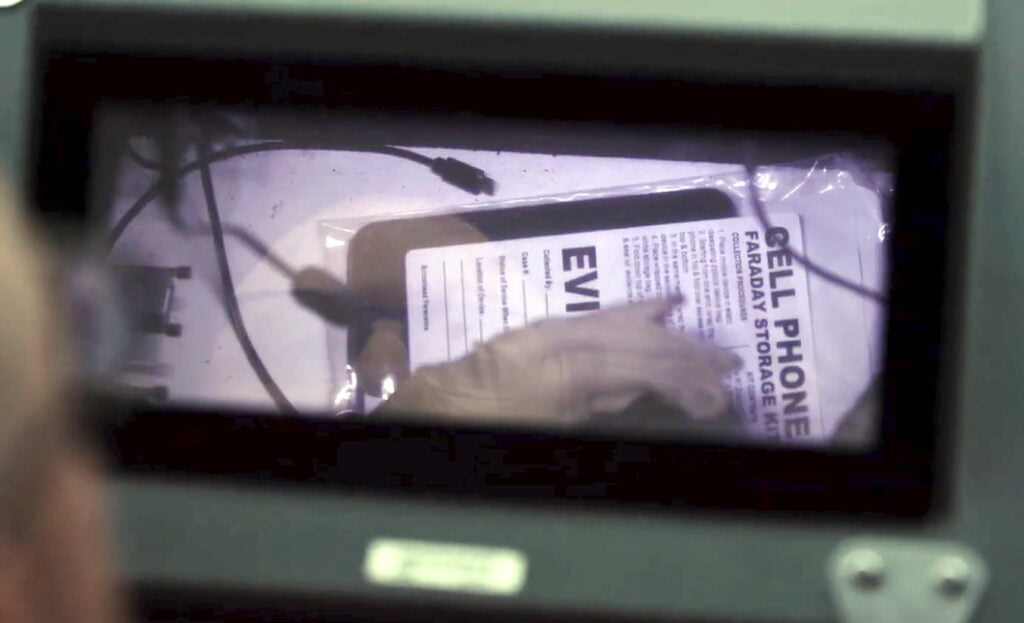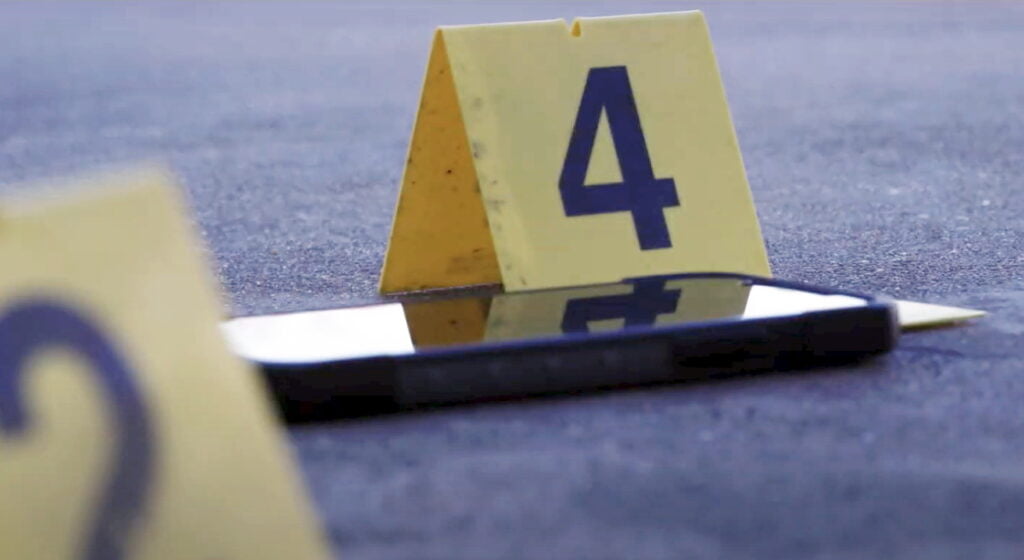Artificial intelligence is putting criminals behind bars.
It scours mountains of data – from smartphones, computers, surveillance cameras, smartwatches and countless other digital sources – identifying what’s relevant to the investigation and discarding the rest.
It provides critical evidence that places the suspect at the scene of the crime.

And it identifies patterns, reveals connections, establishes links between co-conspirators, and uncovers leads for law enforcement agencies quickly and accurately.
In the old days, detectives would be looking for fingerprints, tire tracks, discarded cigarettes and a trail of blood to nail the suspect.
Today the biggest single source of evidence is the phone. In the last 15 years or so it has transformed crime fighting, and it now features in virtually every modern-day crime investigation.
The problem with evidence from phones – and from every other device from drones to smartwatches – is that there’s simply so much of it.
Scrolling through a seized smartphone and screen-grabbing the interesting bits is not only in breach of the Chain of Custody (rules to prevent evidence tampering), it’s also tremendously time-consuming.
Detectives would be drowning in data if it weren’t for software that allows them to extract and process it effectively.
Cellebrite is an Israeli company that started out unlocking phones to access data and has grown into a world-leader in digital intelligence, providing software to over 5,200 law enforcement agencies in 120 countries.

Since it was founded in 1999 it’s developed software to help police officers and others at every stage of the investigation. Pathfinder, one of its newer additions, uses AI to filter and analyze vast amounts of data.
Imagine, for example, that police have arrested a suspect in a bank robbery and seized their phone and computer. They also have video footage from surveillance cameras, footage from a drone used by the suspects for reconnaissance, and they know at least three other people were involved.
“The police now have a mountain of data and they need to prove that those people are connected to each other,” says Yossi Carmil, CEO of Cellebrite.

It’s a classic operation for Pathfinder, he says, which merges data from many different sources.
“It can basically take data from the cellphone, from the computer and from the video camera and create a mix that enables the police to analyze, who texted whom and when, even if those messages have been deleted.
“It is able to build a perfect cluster of evidence relating to a suspicious person in order to bring as much data to court in order to convict a person.
Sign up for our free weekly newsletter
Subscribe“We can collect available data from the phone, deleted data, and what’s called hidden data – the many applications running on your phone today that you don’t even know about. We transform that into data that can be implemented by an examiner.”
Real detective work isn’t like TV cop shows. Not as sexy, not as glamorous. Lots of research, lots of paperwork.
“I would say most police forces are still stuck in the 20th century,” says Carmil. “If you compare them to intelligence agencies, there’s still lots of manual work, which has to be digitized.

“There are lots of inefficiencies and disconnects in the way data is gathered and stored in the workplace.
“The examiners, the analysts, and the prosecutors are all supposed to work together in a smooth, streamlined, efficient way to bring evidence to court.
“But this is not the case. They are pretty much disconnected from each other, and that creates demand for something that will digitize the investigative flow end to end.”
Evidence produced in court must be properly obtained, or it’ll be thrown out as inadmissible. There are legal limits on what data you can access from a seized phone or a computer.
“Judges normally limit the ability of the police and give them a warrant for half a day, or a day, to review the relevant data,” says Carmil.
“If it’s related to financial crime, it will be more text. If it is a child exploitation, or sex crime, it will be more images, or it could be geolocation. It depends on the crime.

“At the end of the day, our technology enables the police to review data which is relevant to the case they’re investigating.
“Until 15 years ago, officers did it manually scrolling on the phone, taking a picture from a screen. Today there is data accountability and data ethics.
“I would say law enforcement agencies are dancing between national or public security on the one hand and solving crime first and putting criminals behind bars on the other. They are forced to protect the data privacy of the suspect and conduct investigation looking only at the relevant data.”
Cellebrite’s array of software products also help with the administrative challenges of storing and tracking digital data, and ensuring only the appropriate people can see the data, and review it.

So will AI actually replace detectives? “My opinion, never ever,” says Carmil. “AI is a means to assist human investigators in order to optimize or increase efficiencies and performance by meeting KPIs (key performance indicators) around investigations.
“So theoretically AI is obviously something which is very important. But in my opinion, imagining that AI will replace human being is not relevant at this stage.”
Related posts

Editors’ & Readers’ Choice: 10 Favorite NoCamels Articles

Forward Facing: What Does The Future Hold For Israeli High-Tech?

Impact Innovation: Israeli Startups That Could Shape Our Future




Facebook comments